Smart switches vs smart bulbs: Which is best for your home?
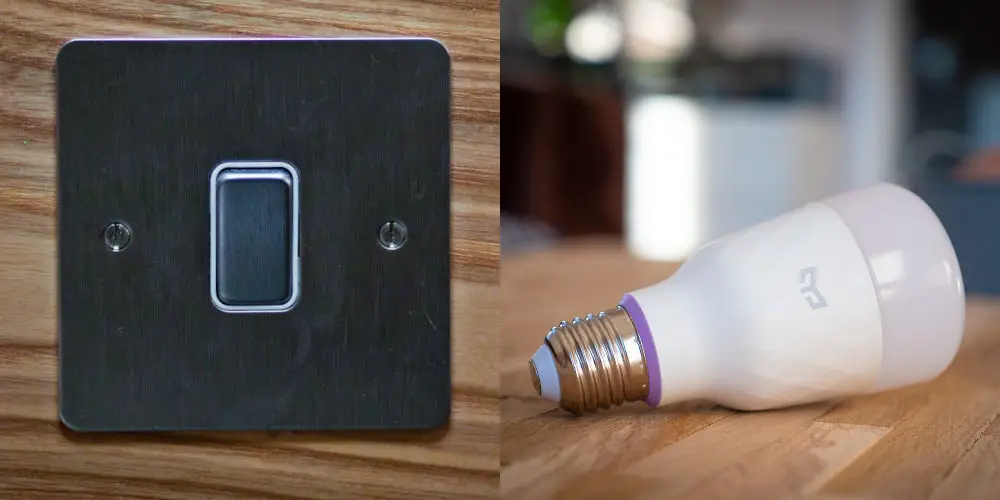
Choosing the ideal smart lighting for your home presents you with two options: Smart switches vs smart bulbs. It can all seem a little complicated to start with. Thankfully, it’s easy to decide with the right information.
If you’re still stuck using the same lighting as your grandparents, it’s time to go smart. Upgrading to smart lighting is a worthy investment as it offers many benefits over turning a light on/off at a switch.
What stops most people from changing their bulbs is they think it’s far too fiddly, expensive, and difficult compared to the traditional (and dumb) lighting options.
The reality is, changing to smart bulbs or smart dimmers will open up a new world of lighting options. You can easily control your lights remotely, dim them to suit the mood, and change their colour.
Some people get stuck on choosing between smart switches vs smart bulbs, and so they give up. Thankfully, the decision is far easier than it might first appear. And with the right information, making your choice should take a few minutes.
Why smart lighting?
9 times out of 10, Smart lighting is the first feature many add to their home when exploring home automation. The reason is usually pretty simple, lights make a home look lived in, whether you’re at home or away. Plus, the right lights can bring a room to life.
Another reason many start with smart lighting is they add another level of control. You can control them remotely using an app, programme them to turn on/off based on logic, or set them on timers.
There’s nothing quite like having your bedroom light automatically and slowly dim up at 7 am as you wake up or being able to get into bed and turn all your home’s lights out with a single tap. These are just the tip of the iceberg of smart lighting.
And the most exciting feature is voice control. You don’t need a light switch when Alexa or Siri can do the job! Not to mention most smart bulbs offer millions of colour options, allowing you to tweak them to your mood.
You can even automate your outdoor lighting to keep your home safe and secure, and combine them with IP cameras to catch people red-handed, even if that’s your mother turning up to feed the cats!
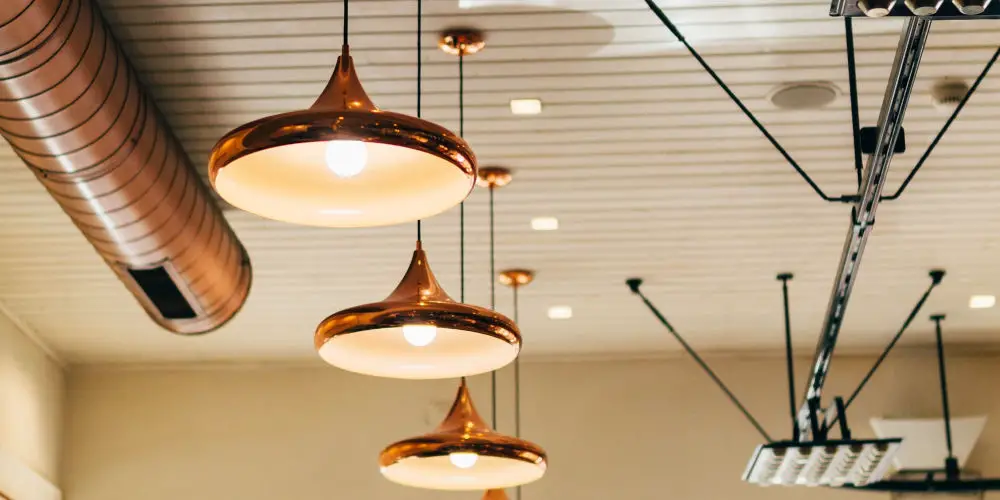
Choosing between smart switches vs smart bulbs
While all of this sounds good, where is the best starting point? You could upgrade your light switches, change your bulbs, install LED lighting strips, or wire each light fitting on its own smart circuit. You have just a few different options!
The two most common options are smart bulbs and smart switches. You might think it’s one vs the other. But you can use both. And for most homes, a mix of the two will be ideal and the easiest solution.
You can even use a smart bulb with a smart switch, which isn’t always recommended. But more on that in a bit.
Getting it all working together
Another issue you’ve likely encountered is how to get it all working together. Very few companies sell both, and it seems every brand uses a different operating system (or protocol, as we call them). It’s easy to lose heart.
Do you use a protocol such as Wi-Fi (used by both Alexa and Google Home and many others)? Zigbee? Z-Wave? or a more niche system like Lightwave or Apple’s HomeKit? Again, so many options.
You could use a new smart home standard called Matter that promises cross-platform compatibility. This system means you no longer need to worry which smart home platform a light works with or which technology it uses to communicate (Wi-Fi, Zigbee, Bluetooth, or other).
If a bulb or switch is Matter-certified, it will work with any Matter-compatible platform and interoperate with any other Matter device. Sadly, Matter is coming later in 2023.
So, if you’re eager to get going, you’ll need to pick a platform and a protocol before starting your smart lighting journey. We’d encourage you to use Zigbee or Z-Wave. They are different from Wi-Fi and won’t slow your internet speed down.
With Zigbee or Z-Wave, you can start with a hub and a single smart bulb or smart switch, and grow from there as you get more comfortable with the technology and how it can enhance your life.
We don’t recommend going gun-ho and installing a million devices in an afternoon, as you’ll end up in a mess with plenty of issues and no idea how to get your system working. Go slow and scale as it feels right.
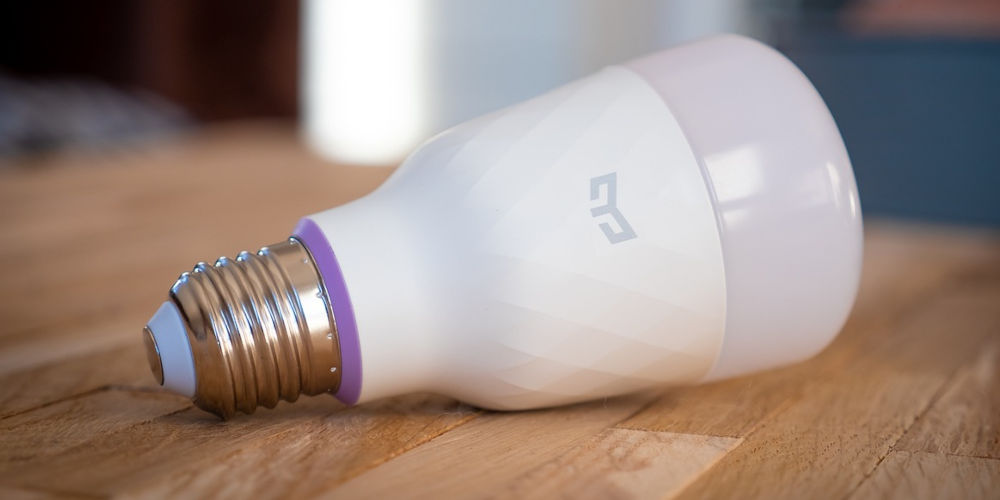
Why use smart bulbs?
Probably the easiest option is smart bulbs, as you can replace your existing ones in seconds without needing to rewire a socket or read a manual. LED bulbs were very expensive just a few years ago, but prices have dropped dramatically.
Aside from their ease of installation, another reason to choose smart bulbs is for the colour options. You can choose from millions of colours from the app, a feature you don’t have with smart light switches.
Smart bulbs are good for pedants, lamps, and other decorative lighting such as wall sconces.
You can buy a set of 2 smart LED bulbs for under £15 that use Wi-Fi, an app for control, and offer thousands of colour options. They are also dimmable, creating plenty of options for lighting your home.
With a bigger budget, many opt for Philips Hue. They offer a range of smart bulbs and a hub that allows you to control them remotely, set up scenes, and integrate with other systems, thanks to its use of Zigbee.
Smart bulbs have one fatal flaw: the light switch
There is one snag to using smart bulbs: your light switch becomes god. If someone turns it off, the bulb loses power, and you lose control. But, before you gaffer tape every light switch on or encourage everyone to use Alexa to control the lights, there is another option.
You can create automations using a smartphone app or online portal to turn your lights on and off at set times each day. Another option is to use smart motion sensors. You’ll need to purchase them on top of smart bulbs, but most manufacturers sell compatible sensors.
With smart motion sensors, you can get them to turn on a light for a set period, making them ideal for hallways and bathrooms. In your living room or dining room, they can activate the lights. However, you’ll need an app or voice control to turn them off.
With some systems, such as Philip Hue and Lutron Caseta, you can buy wireless battery-powered switches that can be used instead of your traditional wall light switches but can be fixed to the wall. But unlike normal switches, they can also be used to activate scenes.
Wireless switches take seconds to install and don’t involve rewiring. That said, you might still want to remove your existing switches to make operating the system easier, requiring you to mess with wires.
An issue with battery-powered devices is that they will eventually need a new battery and you usually can’t anticipate when they’ll need replacing. It can be annoying to have to change batteries.
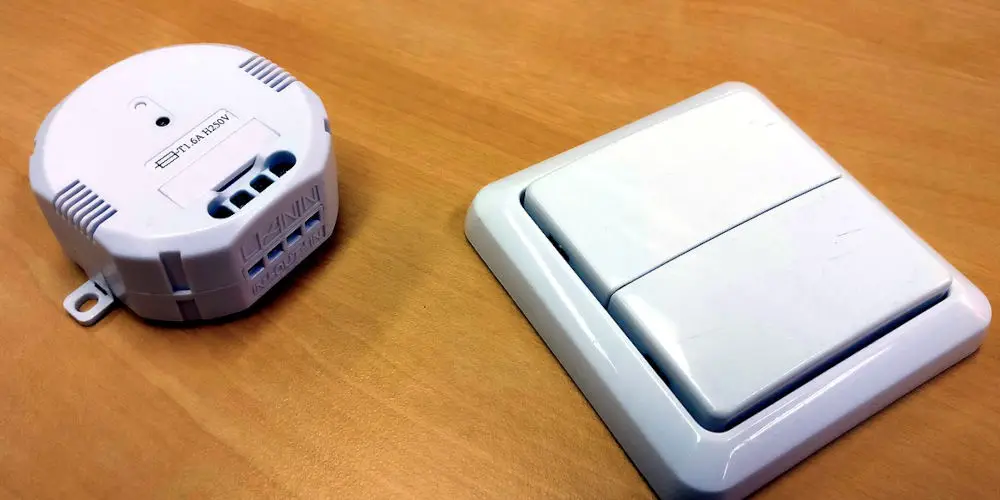
Why use smart switches?
The technology hidden within smart switches is always on. Unlike smart bulbs, when you turn off a smart switch it’s still powered and able to communicate with your home automation system. So, no one can inadvertently ruin your system or preset automations.
Most smart light switches and dimmers are modules that sit behind your current lighting switch and turn the entire circuit smart. The EVVR in-wall smart relay switch and the Fibaro Dimmer 2 are two great examples.
As these modules turn the circuit smart, you shouldn’t need to change your bulb. You could buy some cheap dimmable LED bulbs that allow you to vary their brightness and create different moods. It can also make sense to upgrade your light switch to a momentary one.
Unlike smart bulbs which are usually plug-in-and-play, smart switches involve a few more steps. You’ll need a hub to form the basis of the system. Also, you’ll need to rewire the switch or pay an electrician. So these systems are far more expensive than changing a bulb.
However, in a room with multiple bulbs, changing the single switch is far cheaper than replacing all of the bulbs. Not to mention far easier! If you have high ceilings, replacing bulbs could be a nightmare. The same is true for outdoor lights that are controlled by an indoor switch.
You can also use smart motion sensors to activate lights or preset scenes. If you’re using a Z-Wave system, the Fibaro Motion Sensor is ideal and affordable.
Flaws with smart dimmers and switches
A major downside of smart switches is you can’t adjust the bulb’s colour, even if you’re using a multi-coloured smart bulb. So you might find you use a smart LED bulb with a smart switch and two separate apps. One to turn the light on/off, and another app to adjust the colour.
That said, some smart bulbs won’t work nicely with dimmer modules. The bulb might not work, or it might randomly flicker. You might waste a few hours trying different bulbs with no luck or need to install a bypass unit at the light fitting.
We advise using dimmer modules over smart light modules, as the former doesn’t require a neutral wire. Most homes don’t have a neutral wire at the light switch, creating an issue. Plus, you might not want to rewire as DIY isn’t for everyone.
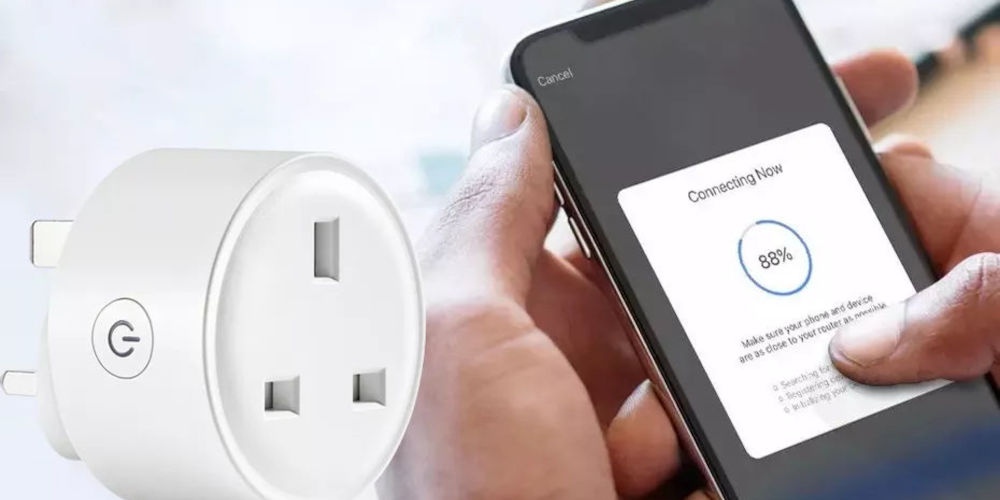
Are smart plugs an alternative?
Bulbs are a great option for all kinds of lighting, whereas smart switches might only be useful for fixed lighting, such as pendants, spots, and sconces. Thankfully, there is another option: smart plugs.
You can buy smart plugs that work with Wi-Fi, Zigbee, Z-Wave, and many other systems. Evver has just released one that works with Apple Homekit.
As a great alternative to smart bulbs and smart switches, smart plugs are ideal for moveable lights or other devices, where you want more control and are building a home automation system. Plus, like bulbs, they don’t require any rewiring or fuss to install.
You can also combine multiple devices on a single smart switch and create scenes without the need to programme a system.





